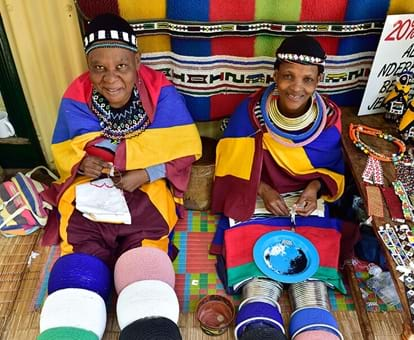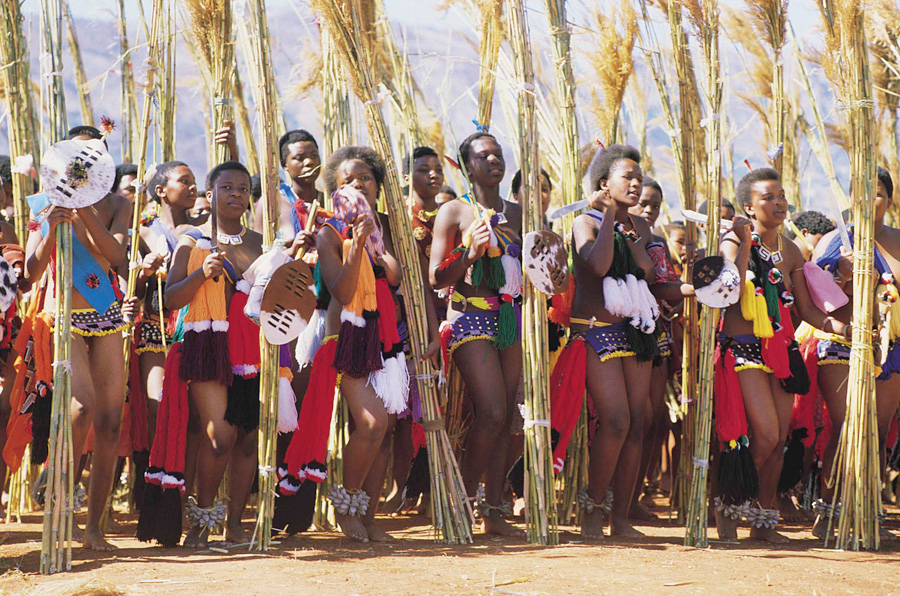South African Culture Today Can Be Fun For Everyone
South African Culture Today Can Be Fun For Everyone
Blog Article
Rumored Buzz on South African Culture Today
Table of ContentsThe Definitive Guide to South African Culture TodayA Biased View of South African Culture Today9 Easy Facts About South African Culture Today ShownThe Ultimate Guide To South African Culture TodayAll About South African Culture TodayWhat Does South African Culture Today Do?
This follows with vocal singing and drum beating. The couple then satisfy with the senior citizens and discuss the relevance of their union. An issue of relevance in Zambian villages is the passing away of loved ones. All members of the village placed cash, time and initiative with each other for the funeral of the deceased.Songs and dancing is a really essential element of the Zambian culture. The various tribal devices have their very own dance types; nonetheless, makishi is common among all people.
A Biased View of South African Culture Today
When it comes to songs, drums are utilized one of the most, with a selection of drumming events. In Zambia, majority of the individuals are Christian; Protestant and Roman Catholic. There are little groups of Muslims and Hindus, with the rest following local indigenous tribal ideas.

South African heritage and society is greatly varied, and includes various groups of individuals who each have their very own traditions and beliefs. Having such a variety of individuals and societies is what makes South Africa so distinct. In the real sense of the expression, we are a rainbow nation.
Making it the 7th on the checklist of countries with the most Portuguese people in it outside of Portugal. Portuguese is not only a culture, but it is also a language and a nationality. Portuguese people stem from the nation of Portugal in Europe, nonetheless, due to Portugal (like numerous various other nations in Europe) checking out the world and dominating various other nations throughout the 15th 20th centuries, South Africa has what we call Portuguese South African's living in it.
The 9-Second Trick For South African Culture Today
Among the famous functions of the topography is a plateau that covers practically two thirds of the center of the nation. The plateau facility climbs toward the southeast, where it climaxes in the Drakensberg array, part of an escarpment that divides the plateau from the seaside locations. The Drakensburg consists of Champagne Castle, the greatest height in the nation.
The region north of the Witwatersrand, called the bushveld, inclines downward from eastern to west toward the Limpopo River, which creates the international boundary. The western section of the plateau, the middleveld, also descends in the direction of the west and differs in altitude between the highveld and bushveld. Between the Drakensburg and the eastern and southern coast, the land descends to the sea.
Nearer the coast there is a low-lying plain called the eastern lowveld. Southwest of the plateau the nation comes to be progressively more dry, paving the way to the hostile desert of the Great Karroo, approached the east by the lower, better watered plateau of the Little Karroo. Separating the dry southern inside from the sandy coastal of the southerly coast and West Cape is an additional variety, the Langeberg.
Facts About South African Culture Today Uncovered
The nation's racially, ethnically, and politically split background has produced nationwide and subnational icons that still operate as icons of the nation, and others symbols that are accepted only by certain teams. The monoliths to white inhabitant conquest and political dominance, such as the Afrikaner Voortrekker ("pioneer") Monument in Pretoria and the Rhodes Monolith honoring the British colonial empire contractor and Cape head of state Cecil Rhodes, remain sectarian icons.
The initial contemporary residents were the San ("bushman") hunter-gatherers and the Khoi ("Hottentot") peoples, that herded livestock (South African culture today). The San might have been existing for countless years and left evidence of their visibility in hundreds of ancient cave paints ("rock art"). Bantu-speaking clans that were the forefathers of the Nguni (today's amaZulu, amaXhosa, amaSwazi, and vaTsonga peoples) and Tswana-Sotho language groups (today's Batswana and Southern and Northern Basotho) migrated down from east Africa as early as the fifteenth century

Both former republics of the Orange Free State and Transvaal (South African Republic) were developed by Afrikaner inhabitants that defeated and dispossessed the Basotho and Batswana. Lesotho would certainly have been by force incorporated right into the Orange Free State without the extension of British protection in 1869. The ultimate unification of the country arised from the South African War (18991902) between the British and the 2 Afrikaner republics, which minimized the country to destroy at the beginning of the twentieth century.
Afrikaners traditionally considered themselves the just real South Africans and, while providing full citizenship to all homeowners of European descent, denied that condition to individuals of color until the autonomous shift of 1994. British South Africans maintain a sense of social and social connection to Great Britain without deteriorating their official statement identification as South Africans.
All About South African Culture Today
The diversity and fragmentation within ethnic groupings and the balance of stress between those groups throughout the twentieth century prevented interethnic civil problem. While intergroup stress over resources, privileges, and political supremacy stay, those conflicts are as likely to pit Zulu against Zulu as Zulu against Xhosa or African versus Afrikaner.
From colonial India, British sellers and administrators brought the curved metal ornamental roofing systems and slender shoelace work pillars that still typify the verandas of cottages in the areas and cities throughout the country. Holy places add an essential architectural element also in the tiniest communities. Along with the rising steeples and timeless stonework of Afrikaans Dutch Reformed churches, Anglican churches, synagogues, mosques, and Hindu shrines give variety to the religious building scene.

Butchering and the developing of conventional grain beer are necessary in securing the engagement and Read Full Article goodwill of the ancestors that are considered the guardians of good fortune, success, and well-being. Indian neighborhoods preserve their indigenous culinary traditions and apply them on Islamic and Hindu ritual and ceremonial events. Afrikaners and Coloured people collect at weekends and unique celebrations at multifamily barbecues called braais, where area bonds are enhanced.
Due to the fact that this was the main economic business of both black Africans and white colonists, dispute in between those groups fixated the property of grazing land and animals. In 1867, the biggest ruby deposits on the planet were found at Kimberley in the west central location. The wealth from those fields assisted finance the exploitation of the greatest gold coral reef worldwide, which was uncovered on the Witwatersrand in 1886.
All About South African Culture Today
This led to misconceptions and deliberate misrepresentation in the ventures of white settlers and federal government authorities with African principals during the colonial duration (South African culture today). In the establishment of African books, some facets of public and mainly "tribal depend on" land period were preserved, and also in white backwoods, forms of public tenure were still practiced in areas with African neighborhoods
After the autonomous find here transformation of 1994, programs for land restitution, redistribution, and reform were set up, but development has actually been slow. The white minority still manages eighty percent of the land. Following farming land invasions in Zimbabwe, the Division of Land Matters has vowed to speed up land redistribution.
Report this page